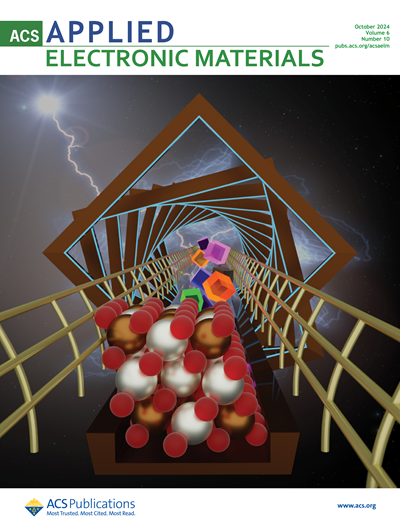Planting date and tillage effects on yield and nutrient uptake of two sorghum cultivars grown in sub-humid and semi-arid regions in South Africa
IF 4.3
3区 材料科学
Q1 ENGINEERING, ELECTRICAL & ELECTRONIC
引用次数: 0
Abstract
Sorghum is emerging as a viable crop option to increase food production under changing climate due to its resilience to drought and marginal soils. Appropriate planting date, crop cultivars, type of tillage and rotations, under contrasting climatic conditions, could make significant contribution on the effective management of sorghum under changing climatic conditions. A short-term study was carried out to investigate the effects of planting date, crop cultivar, tillage type and rotations on the growth and primary nutrient uptake of sorghum in contrasting climatic regions.The study was conducted in Free State - (FS) and KwaZulu Natal (KZN) Provinces of South Africa over two seasons (2020/21 and 2021/22). The two cultivars (Pan8816 and Macia) were sown in December (PD1) and in January (PD2) under conventional tillage (CT) and no-till (NT) and with two rotations (Sorghum-Cowpea-Sorghum and Sorghum-Sorghum-Sorghum) resulting in 2×2×2×2 factorial experiment.In KZN, in both the first (2020/21) and second (2021/22) seasons, the effects of all the factors, except cultivar in the second season, were not significant on yield, and uptake of nitrogen (N), phosphorus (P) and potassium (K). In the second season, Pan8816 (4.40 t/ha) produced 3.3 times higher yield than Macia (1.32 t/ha), and took up higher N, K and P. In FS, the early planted sorghum (1.15 t/ha for season one; 3.39 t/ha for season two) had significantly higher yield than late planted sorghum (0.434 and 0.91 t/ha for seasons one and two, respectively). Furthermore, the early-planted crops took up higher N, K and P than when planted late, while Pan8816 took up 1.74 times more P than Macia. Plants grown under CT (2.61 t/ha) produced significantly higher yield than under NT (1.70 t/ha), with plants under CT taking up significantly more K than those grown on NT. These findings suggest that in the drier FS, early planting under conventional tillage, while in the wetter KZN, selecting the appropriate cultivar (PAN8816), are essential for sorghum grain yield, at least in the short-term.南非亚湿润和半干旱地区种植的两种高粱品种的播种日期和耕作对产量和养分吸收的影响
在气候不断变化的情况下,高粱因其对干旱和贫瘠土壤的适应能力而成为增加粮食产量的一种可行作物。在不同的气候条件下,适当的播种日期、作物栽培品种、耕作类型和轮作方式,对在不断变化的气候条件下有效管理高粱大有裨益。本研究在南非自由州(Free State)和夸祖鲁-纳塔尔省(KwaZulu Natal)进行,历时两季(2020/21 和 2021/22)。两种栽培品种(Pan8816 和 Macia)分别于 12 月(PD1)和 1 月(PD2)在常规耕作(CT)和免耕(NT)条件下播种,并进行两种轮作(高粱-豇豆-高粱和高粱-高粱-高粱),形成 2×2×2×2 因式试验。在克州,无论是第一季(2020/21)还是第二季(2021/22),除第二季的栽培品种外,所有因素对产量以及氮、磷、钾吸收的影响均不显著。在 FS 中,早播高粱(第一季为 1.15 吨/公顷;第二季为 3.39 吨/公顷)的产量明显高于晚播高粱(第一季和第二季分别为 0.434 吨/公顷和 0.91 吨/公顷)。此外,早播作物对氮、钾和磷的吸收量均高于晚播作物,而 Pan8816 对磷的吸收量是 Macia 的 1.74 倍。在 CT 下种植的植株产量(2.61 吨/公顷)明显高于在 NT 下种植的植株产量(1.70 吨/公顷),而在 CT 下种植的植株对 K 的吸收量明显高于在 NT 上种植的植株。这些研究结果表明,在较干旱的弗朗西斯科州,常规耕作下的早期种植,以及在较潮湿的克钦邦,选择合适的栽培品种(PAN8816),对高粱谷物产量至关重要,至少在短期内是如此。
本文章由计算机程序翻译,如有差异,请以英文原文为准。
求助全文
约1分钟内获得全文
求助全文
来源期刊

ACS Applied Electronic Materials
Multiple-
CiteScore
7.20
自引率
4.30%
发文量
567
期刊介绍:
ACS Applied Electronic Materials is an interdisciplinary journal publishing original research covering all aspects of electronic materials. The journal is devoted to reports of new and original experimental and theoretical research of an applied nature that integrate knowledge in the areas of materials science, engineering, optics, physics, and chemistry into important applications of electronic materials. Sample research topics that span the journal's scope are inorganic, organic, ionic and polymeric materials with properties that include conducting, semiconducting, superconducting, insulating, dielectric, magnetic, optoelectronic, piezoelectric, ferroelectric and thermoelectric.
Indexed/Abstracted:
Web of Science SCIE
Scopus
CAS
INSPEC
Portico
 求助内容:
求助内容: 应助结果提醒方式:
应助结果提醒方式:


